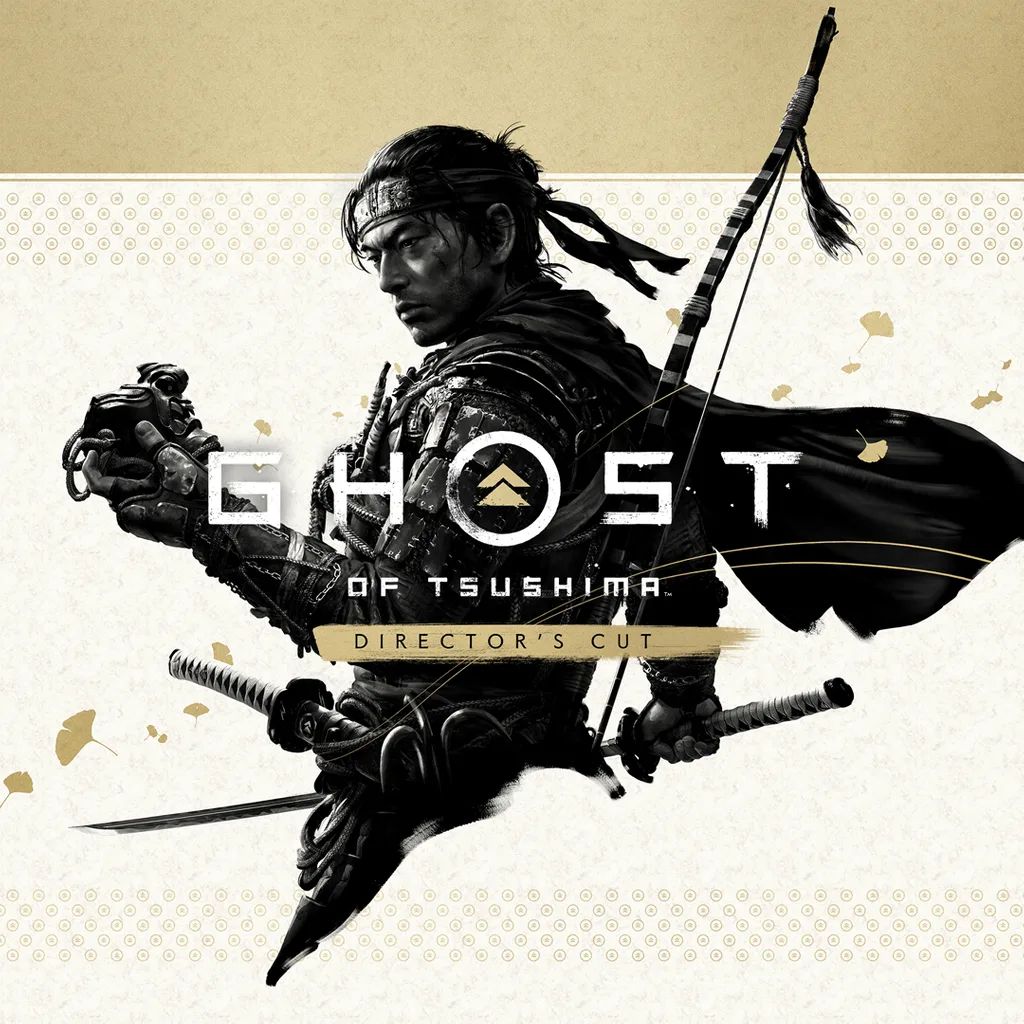Ghost of Tsushima Director’s Cut
Developer: Sucker Punch
Publisher: Sony
Platforms: PlayStation 4 (Reviewed), PlayStation 5
Release Date:
Price: US$69,99 (PlayStation 5) Available Here, US$ 59,99 (PlayStation 4) Available Here, US$ 19,99 (Playstation 4 upgrade) Available here
Overview
Developer Sucker Punch is already known for its open-world games, such as the Infamous series. Released last year, Ghost of Tsushima goes for the tried and true historical and mythological themes as seen in games like Assassin’s Creed. What sets Ghost of Tsushima apart from the competition, as its name implies, is that it’s rooted in Japanese history. Something rarely seen in videogames. It’s also in part a homage to Japanese director Akira Kurosawa’s movies. Kurosawa is famous for titles like Seven Samurai, Rashomon, Dreams and many others. Ghost of Tsushima tries to capture the feel of Kurosawa’s movies with a lot of focus on it’s characters and their struggles.
The game does this all while mixing it with a richness of Japanese folklore and tradition. Ghost of Tsushima is an open-world, action-adventure game with stealth elements. The new Director’s Cut is essentially the same game with added fan requested tweaks, like the option to lock on to enemies in combat. This new version also adds a new episode covering the Iki island invasion. Iki island was invaded at the same time Tsushima was. The “Iki Island Expansion” features a new story, characters, activities and places to explore. Fortunately, the Director’s Cut upgrade can be purchased separately for those who already have the original game on their PlayStation 4. There is also bonus content that can be downloaded separately for free. This bonus content includes a digital artbook and a round table with some of the people involved in the production of the game.
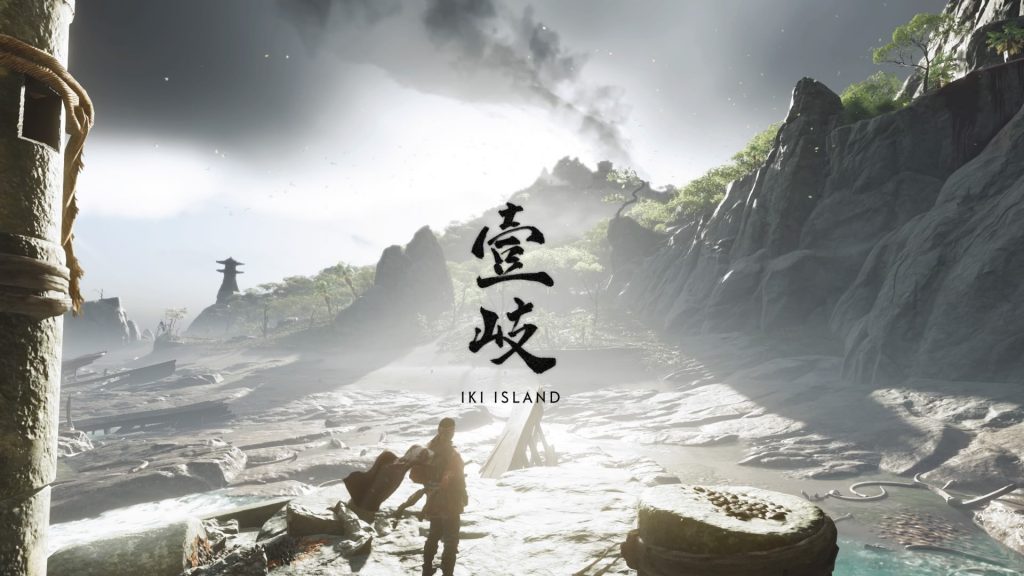
Story
In Japan, the year is 1274 CE. The Mongol empire successfully land in the island of Tsushima with a fleet composed of several ships and thousands of soldiers. Near the shore where the enemy general Khothun Khan lands. An army of 80 samurai await in a desperate attempt to fend off the Invaders. They know they won’t be coming back alive. But to die in battle, as a warrior, is one of the greatest honors a samurai can achieve. You assume the role of Jin Sakai, one of the 80 warriors and the last of his clan. After a bloody struggle, the Samurai are massacred. Their leader is captured. Only a few Samurai survive. Jin is lucky enough to be found by a peasant and nursed back from the dead. Now, it falls upon him to reunite what is left of the samurai and rescue their leader in order to have another chance at driving away the Mongol army even if it means breaking his code of honor.
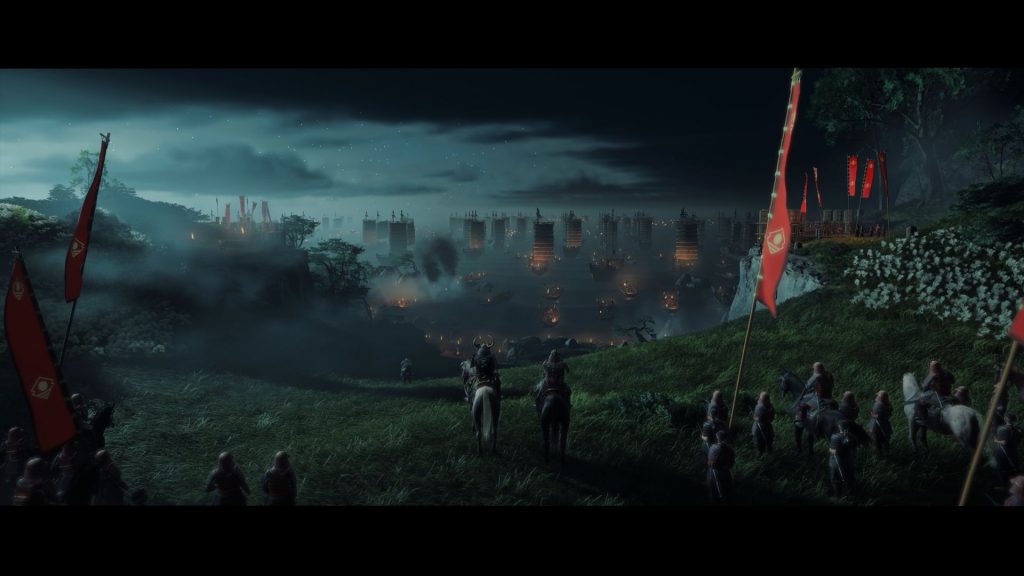
Gameplay
Ghost of Tsushima places a lot of emphasis on its story and characters. After the exciting first battle with the Mongol army, things slow down quite a bit as the game lays the foundation for its background and teaches you the basic controls and game mechanics. The pace picks up after that as Jin forms his plan to take back Tsushima. The Mongol army already took control of most of the island. But, some samurai survived or simply weren’t able to take part in the battle. It’s up to Jin to recruit these warriors by helping them resolve their issues and convincing them to make a stand against the invading army. In the very beginning, you only have the option to take your enemies head on. Jin’s main weapon is a katana, a samurai sword. You can choose to start a battle with a “stand-off”, where Jin will challenge one of the Mongol enemies to an one-on-one duel. If you win, besides having one less enemy to worry about, the remaining ones will be scared for a short amount of time. Also, your resolve gauge wil fill a lot. The resolve gauge is an important part of the gameplay as it’s the only way to heal yourself in the mid of battle. More powerful techniques also require resolve, so it’s a good idea to try and replenish it whenever possible. You also have the option of rushing in and trying to take all the enemies at once, although you’ll be heavily in disadvantage at the beginning of the game.
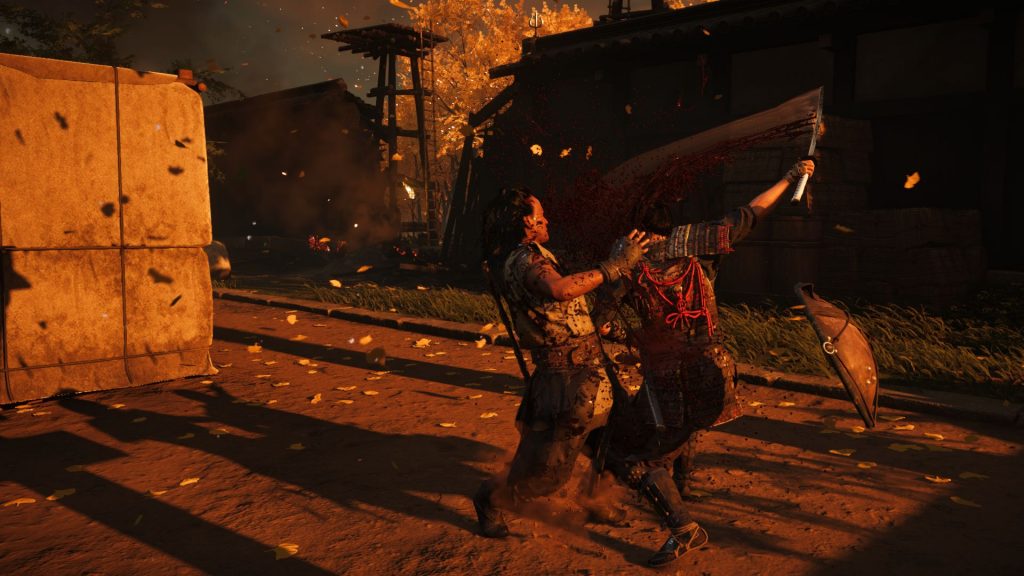
A bit further into the story you’ll gain the option of killing your enemies by stealth and will also acquire more weapons, including long ranged ones. As you complete quests, Jin’s legend will grow. Beyond acquiring points to learn new moves or upgrade already existing ones, you’ll also unlock “Ghost Weapons”. These weapons focus on the stealth part of the combat, such as smoke bombs, a throwing dagger called kunai, etc. You may think: what are ninja weapons doing in a samurai game? In fact, historically, most of these are all samurai weapons that are featured prominently in ninja flicks and games, popularizing them as only used by ninja. They’ll be a great help if you choose to tackle missions more furtively or when facing a great number of enemies. As you take back forts from the Mongol soldiers and defeat their leaders, you’ll also gain points that are used towards unlocking new fighting stances. The different stances will focus on a particular style of enemy, such as a shield or spear wielding one. Each stance and ghost weapon has its own tree of additional skills to unlock, allowing you to throw more kunai at once or, in the case of stances, unlocking new sword moves. Other abilities will unlock by just progressing through the story. There’s no shortage of options when it comes to choosing how to complete missions and fighting your enemies.
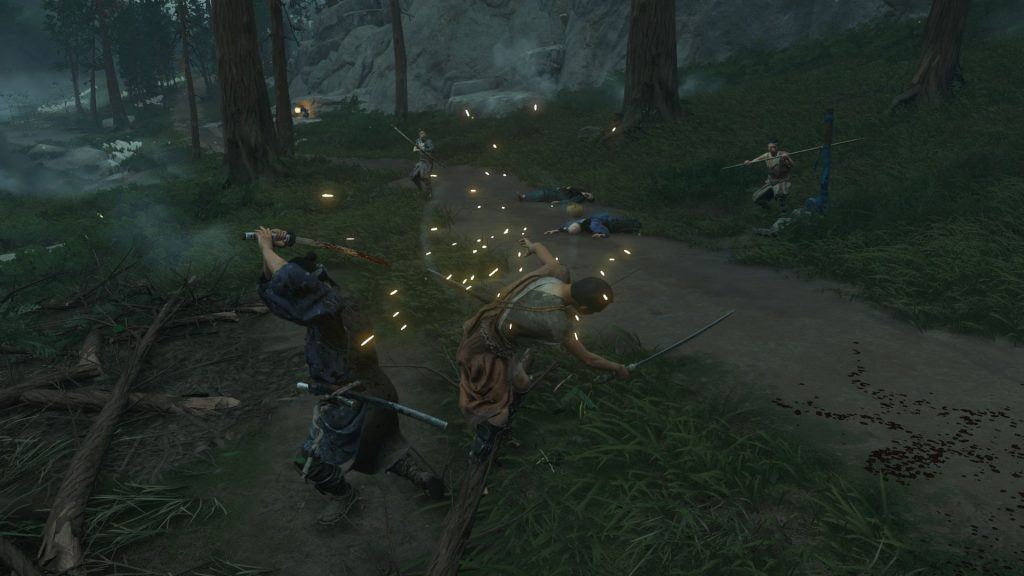
Unlike some similar open world games, Ghost of Tsushima places great importance in its combat. Controls respond well. It allows you to take part in sword duels with enough precision and variety to not make it feel like a necessary nuisance. This allows you to move on smoothly to the next quest. The duels are actually fun. And, depending on the difficult you choose, they will require skill and fast reflexes from the player, especially if you are confronting one of the special duels in the game. These duels involve characters of greater importance and serve as boss battles.
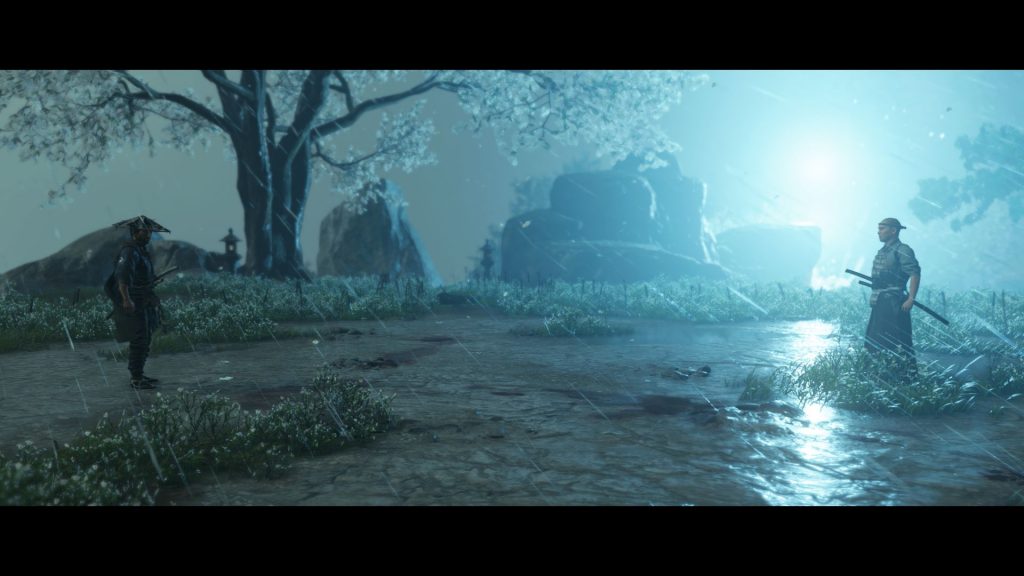
Besides the main quest, you’ll encounter a variety of side activities as you explore Tsushima, from sub-quests that help give more insight and context to the story to more varied ones. These activities can be in the form of mini-games; like cutting through bamboo to hone your sword skills, relaxing in a hot spring and reflecting on the struggles of the past and the journey ahead, and writing Haiku, a type of Japanese poem. Writing Haiku is my favorite. The haiku I wrote doesn’t make much sense, but hey, there’s a nice vista to appreciate and a relaxing background song. I still play that song sometimes when i need to relax.
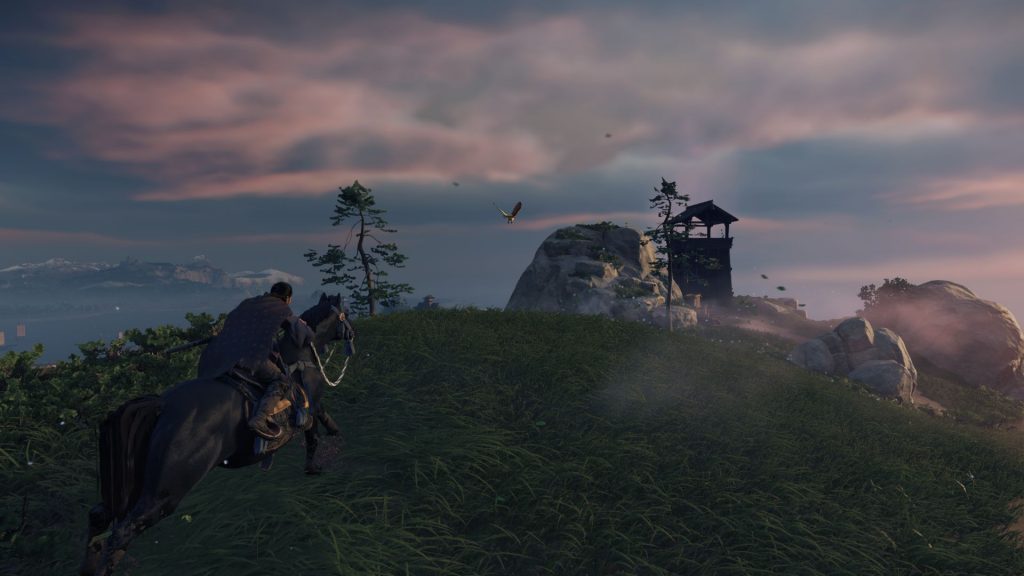
The main story quests have very specific conditions that must be met, taking away some of the player’s freedom. If you step a bit out of the specified quest location, the game will warn you to go back or else they’ll do it for you. This same annoyance is present in another Sony title. Horizon: Zero Dawn. Horizon punishes the player even more harshly. In some cases, erasing a lot of game progress. Having said that, when you decide to play by the rules, the main quests can also be a lot of fun. It gives the player opportunities to experiment with the available tools in combat and the quest objectives.
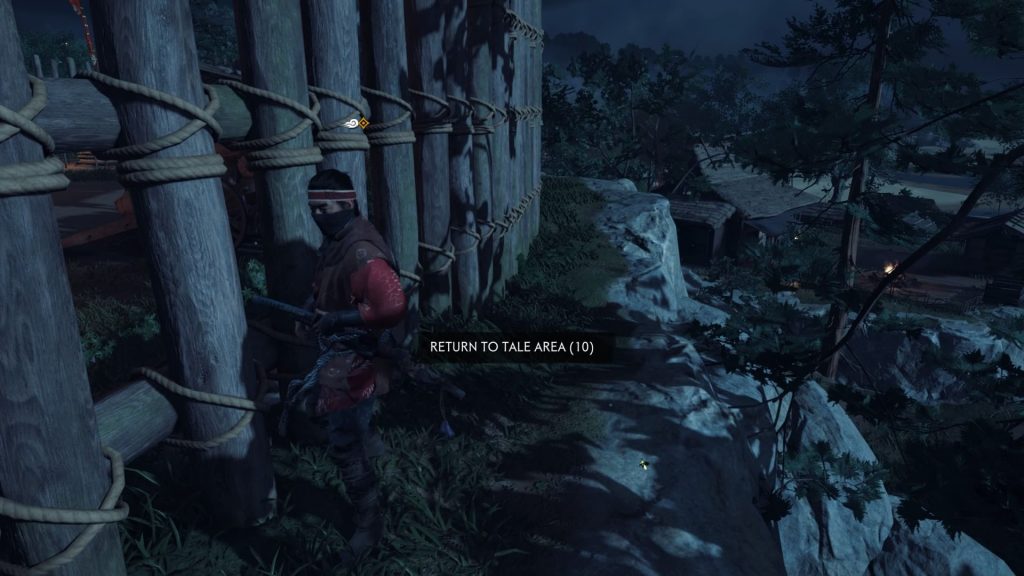
There is also a seemingly never ending amount of trinkets to collect. There are charms that you can equip on your sword that grants advantages like restoring health when you kill an enemy and mere cosmetic ones, like hats, masks and new colors to your armors. Other sub-quests will have you searching for powerful, mythical equipment and techniques. It’s a good idea to do some of these, since they’ll not only grant new ways of dispatching enemies but will also give you more insight on Japanese folklore and the story in general. Most of these are completely optional. There are also other minor activities encountered as you roam through the forests and groves of Tsushima, like taking on a mongol caravan and freeing their prisoners. There’s so much to do, that it can certainly overwhelm some players. They can certainly get tiresome given their frequency and repetitiveness.
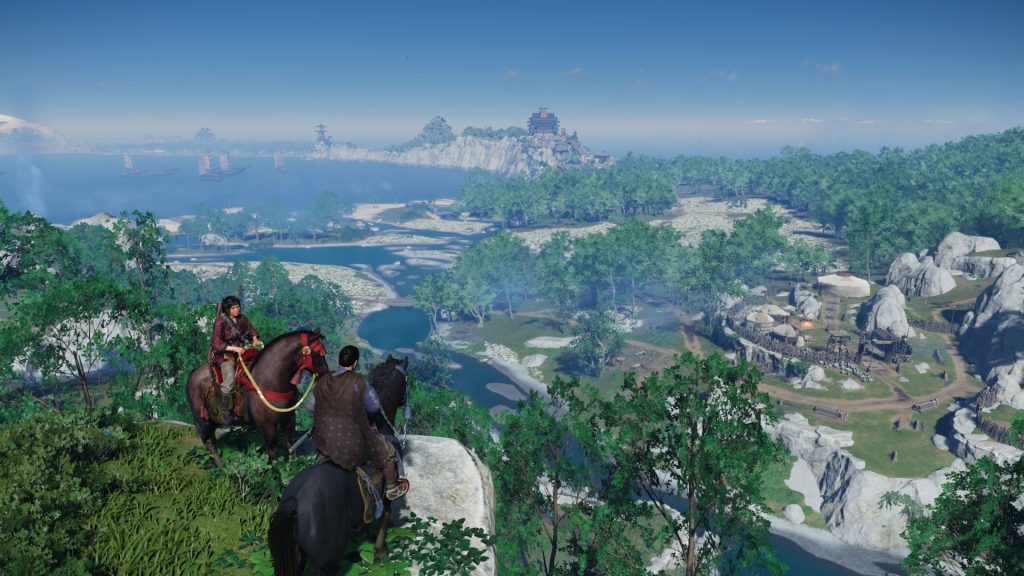
Visuals
What a beautiful place Tsushima is! Ghost of Tsushima, hands down, is one of the most beautiful open-world games in any system you can find today, from earth to sea to the sky. You can feel the amount of care Sucker Punch put in recreating medieval era Japan. The visuals are created with precision and artistry, such as temples with their bells and pagoda, populated with monks, busy in their activities; the many forests and groves with their rustling leaves, bathed in sunlight; to beaches and the soothing come and go of the waves, illuminated by the moon. In some locations, the camera will take an angle far from Jin to showcase the scenery around. It’s a sight to see. I, personally, couldn’t help but stop every few minutes to snap a screenshot given the overall beauty of the game. The character’s models and animations, are also very well done. The main characters faces are particularly impressive with some of them being modeled after real actors. Everything is rendered with such a high quality that it’s almost incredible a PlayStation 4 can handle all this with a solid performance. For fans of Kurosawa’s movies, there’s an option called “Kurosawa mode” that makes the game look and sound like one his old samurai movies. The PlayStation 5 version doesn’t change anything drastically as it ads only obligatory next-gen features such as dynamic 4K resolution and a 60 fps target. These upgrades are already a huge improvement. But don’t expect new models, effects and whatnot.
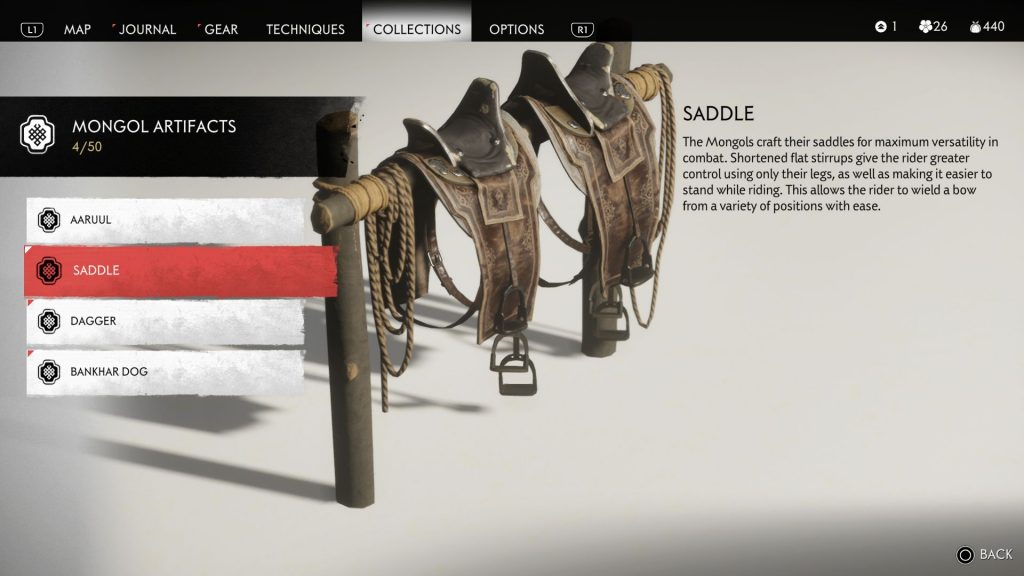
Audio
The audio is varied enough. It focuses on minimalistic, ambient sound like sounds of nature, such as waves breaking on the shore, and of the animals that populate Tsushima. They give life to the game’s landscape. The music also reflects this more calm and ambient feel with the exception of more dramatic moments, like in combat or during a story sequence. There’s a variety of themes like more serene sounds when exploring and taking the views of Tsushima. When taking on a mission, like assaulting a fort or retaking a village, the music takes a more suspenseful tone featuring, sometimes, what appears to be Japanese or Mongolian chanting. This gives the overall ambience an even more exotic and mystic feel to it. Traditional Japanese instruments can be heard throughout the game. Examples of this are stringed ones like a Koto and Shamisen, Japanese flute called Shakuhachi, Taiko drums, among others. The combat effects are also very believable with clashing swords having a lot of impact and giving that extra edge to combat. I particularly enjoy a “samurai cinema” so I went with the Japanese voice-overs. The game also features english voice acting. When Ghost of Tsushima was first released on the PlayStation 4, the character’s lips only synched to the English voice-overs. Now, they added lip synch for the Japanese voices too. But this feature is only available on the PlayStation 5.
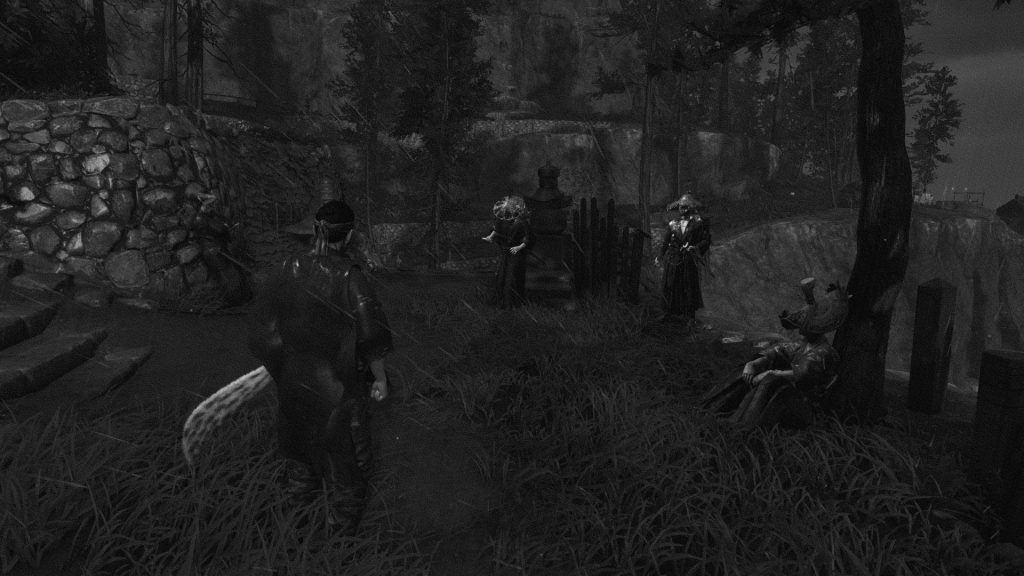
Overall
Ghost of Tsushima is a love letter to Japanese history and culture. Add to this, Sucker Punch’s technical and artistic expertise. The developers tried to go back in time. Recreating, in game form, not only what once was the island of Tsushima, but also, a way of life that’s long gone. It’s very story-driven. But the story is interesting enough so you’ll want to see what happens next and with enough gameplay to keep anyone occupied for dozens of hours. It’s an open-world adventure like so many you see nowadays. The first main differences being its well done and fun combat. The second main difference is a rich background that isn’t explored much, like Eastern culture. Its game design is a bit marred by open-world games conventions. But it is still an outstanding achievement and a really good experience, especially if you happen to be a fan of Japanese culture and samurai movies.
Capsule Computers review guidelines can be found here.


